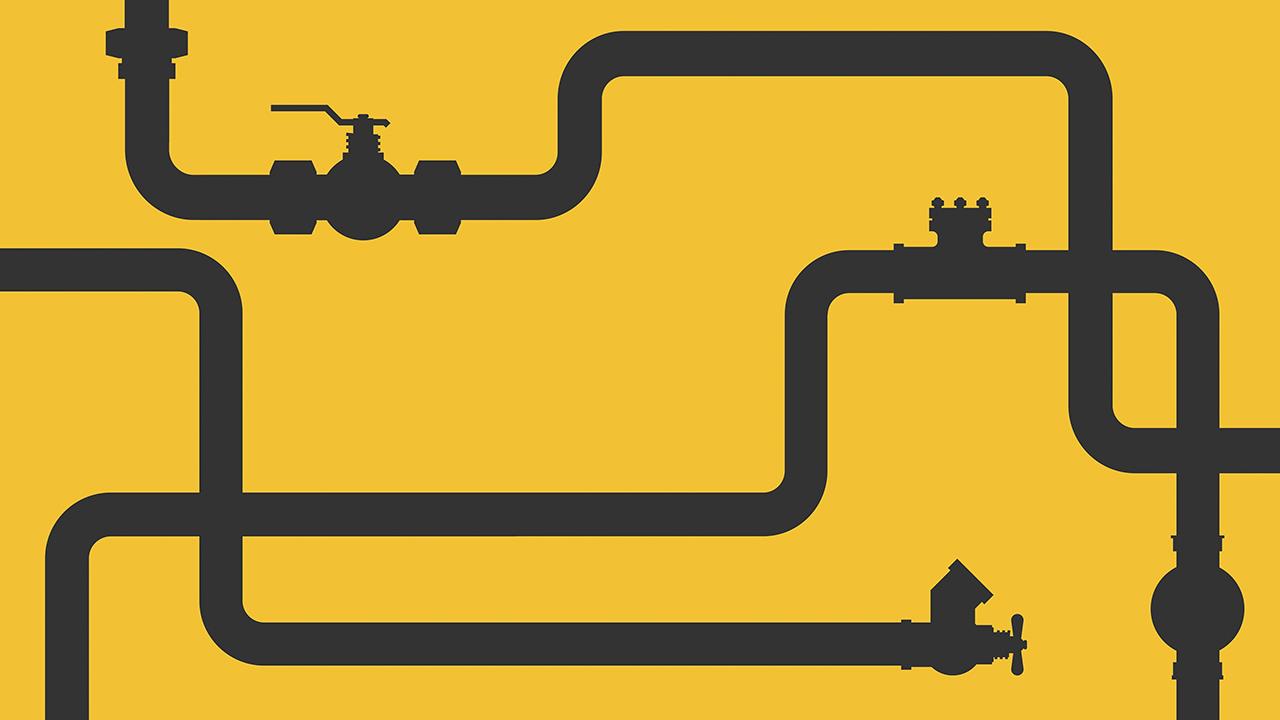

Ask any installer and they will likely have their own views on the benefits of metal vs plastic piping.
Of course, both have their merits as they are suitable for a wide range of applications including potable water and domestic heating systems. But what if there was another technology that combines the strength and stability of metal piping systems with the flexibility and corrosion resistance of plastic – all with the added convenience of press-fit?
Step forward, multi-layer – an increasingly popular and viable alternative for busy domestic and commercial installers.
A flexible all-rounder
Multi-layer piping systems consist of three layers; an outer plastic layer made of polyethylene (PE-RT of the second generation), which protects against corrosion and mechanical damage, a central aluminium layer, which makes the pipe stable yet flexible, and an inner layer, which is also made of PE-RT, for internal corrosion resistance.
This technology offers a single solution for all potable water and heating supplies on domestic and light commercial projects, not to mention industrial applications, such as compressed air and cooling water systems.
Here are five compelling reasons to consider multi-layer piping on your next project.
Enhanced strength
Ultimately, multi-layer systems are about improving the strength and durability of the system compared to that of plastic piping, without compromising on weight or portability, as can be the case with metals.
The longitudinally-welded aluminium layer offers mechanical stability to ensure that the pipe stays in its required position, yet remains flexible enough to bend. It also provides an oxygen barrier (making it suitable for use in central heating systems) and makes the pipe detectable by electronic devices after installation.
Simplicity of installation
Thanks to its flexibility, multi-layer piping can be adjusted to suit the application. It can even be manipulated to follow the line of curved architectural features in modern buildings.
Pipes of 16mm and 20mm can be bent effortlessly by hand to reduce the number of fittings required, which saves time and money during installation. Larger diameters, up to 50mm, can also be bent without risk of de-lamination or kinking, using an appropriate tool.
Even where connections are required, press-fitting enables quick, simple, and reliable joints with no need for hot works. This prevents additional mess on-site, reduces health and safety considerations, and avoids any delays associated with cool down. The only tools needed to form reliable, tight, and durable connections are a cutter, deburrer, and press tool.
The absence of a working flame can also reduce insurance premiums and minimises the risk of damage to existing fittings and fixtures, as well as the surrounding areas.
Hygienically improved
A number of features provide multi-layer piping with enviable hygienic qualities.
Firstly, the polyethylene inner layer is resistant to cracking, ageing, and general wear and tear, as well as being non-reactive and corrosion-resistant; making it suitable for use in plumbing and potable water applications.
The low internal surface roughness of the inner layer (7µm) also make it more difficult for limescale and biofilm to adhere, providing resistance to scale build-up.
Fittings and pipes from leading manufacturers even come with protective caps for added hygienic safety when stored or during an installation break.
Always reliable
These benefits would be irrelevant if the piping was not reliable, but thanks to the in-built structure of multi-layer piping, installers and end-users can have complete confidence in a permanently leak-proof system.
With Geberit’s multi-layer products, for example, there is a fail-safe method of checking for unpressed joints; they are designed to leak slightly during pressure testing (even at low testing pressure), and can be pressed without having to drain down the entire system.
Sustainability credentials
Finally, in addition to the installation and operational benefits of multi-layer piping, good quality systems can also help to reduce the carbon footprint of a building, as the pipe system can be recycled by a specialist.
Thermal conductivity also factors into sustainability, with Geberit’s range offering 0.43W/mK, so it loses around 800 times less heat than copper piping.
Another key benefit is five times less expansion than PEX and eight times less than polybutylene pipes, so it can be bracketed similarly to copper pipe.
It also has excellent acoustic insulation properties, so water passing through the pipework produces significantly less noise than in metal piping.
If that wasn’t enough, multi-layer piping is lightweight and has a low intrinsic scrap value when compared to metals such as copper, reducing the risk of thefts from site.
If you'd like to keep up-to-date with the latest developments in the heating and plumbing industry, why not subscribe to our weekly newsletters? Just click the button below and you can ensure all the latest industry news and new product information lands in your inbox every week.